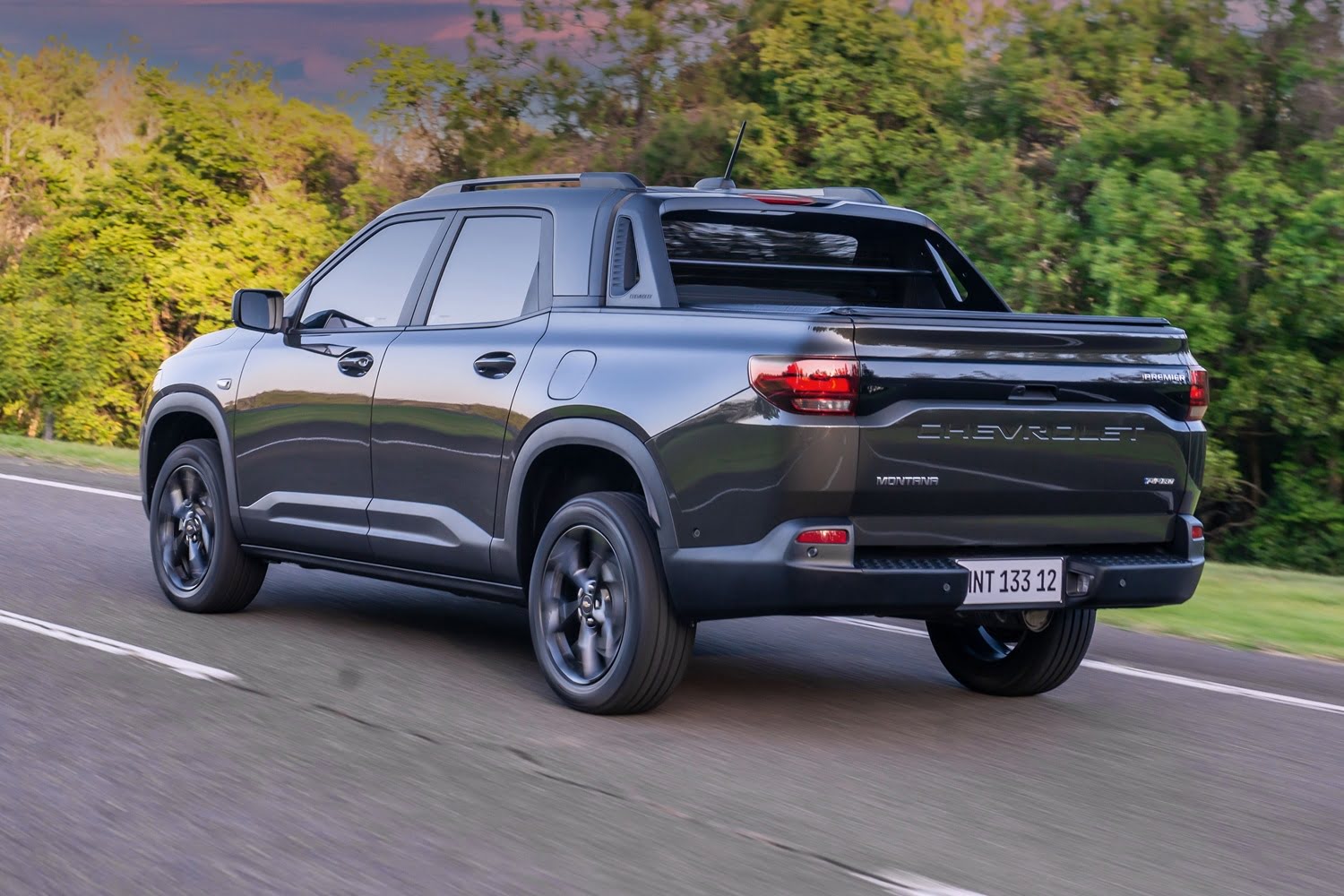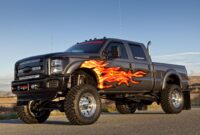Chevy HHR Panel Truck: A Retro Revival for Modern Utility sale.truckstrend.com
In the vast landscape of automotive design, some vehicles stand out not just for their utility, but for their unique character and ability to blend disparate eras. The Chevy HHR Panel Truck is undeniably one such vehicle. Far more than just a quirky wagon, this distinctive model carved out a niche for itself by offering a blend of nostalgic styling, practical cargo space, and a surprisingly engaging driving experience. Launched as a commercial variant of the popular HHR (Heritage High Roof) wagon, the Panel Truck shed its rear windows and back seats in favor of solid body panels and an expansive, secure cargo area, transforming into a versatile workhorse with undeniable vintage charm. For small businesses, mobile service providers, or even enthusiasts seeking a unique canvas for customization, the HHR Panel Truck offered an unconventional yet highly effective solution, bridging the gap between classic American utility vehicles and modern compact efficiency.
Design & Aesthetics: A Blast from the Past
Chevy HHR Panel Truck: A Retro Revival for Modern Utility
The most striking feature of the Chevy HHR Panel Truck is its unmistakable retro design. Penned by Bryan Nesbitt, who also styled the popular PT Cruiser, the HHR drew heavily from Chevrolet’s own heritage, particularly the iconic Advance Design trucks and Suburban models of the late 1940s and early 1950s. This influence is evident in its high roofline, pronounced fenders, and upright grille.
For the Panel Truck variant, this retro theme was amplified. The rear passenger doors were still present but were flush-mounted and devoid of handles, creating a seamless, windowless side profile. This design choice not only enhanced the vintage "panel van" aesthetic but also served a practical purpose: it offered a large, flat surface ideal for business signage, custom wraps, or unique artwork, effectively turning the vehicle into a mobile billboard. The absence of rear windows also contributed to increased cargo security and privacy, a significant benefit for those transporting tools, equipment, or sensitive materials. The dual rear "barn doors" further echoed the classic utility vehicle design, providing wide access to the cargo bay.
Utility & Versatility: More Than Just Looks
Beneath its charming exterior, the HHR Panel Truck was engineered for practicality. Its primary purpose was to provide a compact, efficient, and secure cargo solution, and it delivered admirably within its segment.
- Cargo Capacity: The HHR Panel boasts a generous cargo volume, typically around 62.7 cubic feet with the front passenger seat folded flat. This flat load floor, extending from the rear doors all the way to the dashboard when the passenger seat is down, allowed for surprisingly long items – up to approximately 8 feet in length – to be transported.
- Access and Organization: The wide-opening rear barn doors, combined with the solid side doors, made loading and unloading relatively easy. Many owners found the interior space adaptable, adding custom shelving, drawers, or tie-downs to organize tools and equipment.
- Payload: While not a heavy-duty hauler, the HHR Panel offered a respectable payload capacity (typically around 1,000 pounds, varying by configuration), suitable for a wide range of light commercial applications, from florists and caterers to electricians and mobile pet groomers.
- Security: The windowless design inherent to the Panel model provided an immediate advantage in terms of security and privacy, keeping valuable contents out of sight and less susceptible to theft or prying eyes.

Its compact footprint made it ideal for navigating crowded city streets and fitting into tight parking spaces, a significant benefit for urban businesses.
Under the Hood: Performance & Powertrain
The Chevy HHR Panel Truck shared its mechanical underpinnings with the standard HHR wagon, meaning it offered a range of dependable Ecotec four-cylinder engines.

- Standard Engines: Most Panel models were equipped with either the 2.2-liter Ecotec engine (producing around 149-155 horsepower) or the slightly more powerful 2.4-liter Ecotec (offering 172-177 horsepower). These engines provided a good balance of performance for daily driving and reasonable fuel efficiency.
- Transmission Options: Buyers could choose between a 5-speed manual transmission for more engagement or a 4-speed automatic for ease of use in stop-and-go traffic.
- HHR SS Panel: For those seeking performance with practicality, Chevrolet also offered the rare HHR SS Panel. This high-performance variant was powered by a potent 2.0-liter turbocharged Ecotec engine, delivering a robust 260 horsepower. It featured a sport-tuned suspension, larger brakes, and distinctive styling cues, transforming the humble panel truck into a surprisingly quick and agile utility vehicle, appealing to enthusiasts and businesses that needed to make a quick impression.
- Fuel Efficiency: Thanks to their efficient four-cylinder engines, HHR Panel models generally offered competitive fuel economy for their time, making them an economical choice for businesses covering many miles.
![]()
The HHR’s car-like chassis ensured a comfortable ride and predictable handling, a significant advantage over traditional, body-on-frame panel vans, making it less fatiguing for drivers on long shifts.
Interior & Features: Driver-Centric Cabin
While the rear of the HHR Panel was dedicated entirely to cargo, the front cabin maintained a comfortable and functional environment for the driver and passenger. The interior design largely mirrored that of the standard HHR, featuring a straightforward dashboard layout and a mix of hard but durable plastics.
- Comfort: The front seats were reasonably supportive, suitable for extended periods behind the wheel.
- Infotainment (for its time): Depending on the trim level, features included a basic AM/FM CD player, auxiliary input, and available satellite radio. Higher trims might have offered premium sound systems.
- Practicality: Storage solutions within the cabin included door pockets, a center console, and a glovebox. The absence of rear seats meant a focus on maximizing utility up front, with simple, robust materials chosen for durability in a work environment.
- Visibility: One significant consideration for Panel Truck owners is the lack of rear window visibility. This necessitates careful use of side mirrors and, for many, the addition of aftermarket backup cameras or blind-spot mirrors to enhance safety during maneuvering.
Ownership Experience & Considerations
Owning a Chevy HHR Panel Truck comes with its unique set of advantages and challenges.
Pros:
- Unique Styling: Stands out from the crowd, making it an excellent branding tool.
- Practical Cargo Space: Surprisingly versatile for its size.
- Affordable: Used models are generally very budget-friendly.
- Good Fuel Economy: Especially with the 2.2L or 2.4L engines.
- Car-like Driving Dynamics: More comfortable and agile than traditional vans.
- Customization Potential: A blank canvas for wraps, shelving, and modifications.
Cons:
- Limited Rear Visibility: Requires adaptation or aftermarket solutions.
- Aging Technology: Lacks modern infotainment and safety features.
- Not for Heavy Loads: Designed for light-duty commercial use.
- Parts Availability: While many parts are shared with other GM vehicles, some HHR-specific body panels might become harder to source.
- Common Issues: Like any older vehicle, potential for wear-and-tear issues (e.g., suspension components, power steering problems, some electrical quirks).
Practical Advice and Actionable Insights:
- Buying Used: When purchasing a used HHR Panel, inspect for rust, especially around the wheel wells and underbody. Check for proper functioning of all doors and locks. Pay attention to engine noises, transmission shifts, and look for any warning lights. A pre-purchase inspection by a trusted mechanic is highly recommended.
- Maximizing Cargo: Consider custom-built shelving or modular storage systems to efficiently organize tools and inventory. Rubber floor mats can protect the cargo area from spills and damage.
- Addressing Blind Spots: Invest in a good quality aftermarket backup camera and wide-angle side mirrors. Practice backing up and parking in open spaces to get accustomed to the reduced visibility.
- Customization: For businesses, a professional vehicle wrap is an excellent way to advertise. Interior modifications like LED lighting or power outlets can further enhance functionality.
- Maintenance: Regular oil changes, tire rotations, and checking fluid levels are crucial. Pay attention to suspension components as they can wear over time, especially if the vehicle is frequently loaded.
Price Guide: Chevy HHR Panel Truck (Estimated)
As a discontinued model, the price of a Chevy HHR Panel Truck today is determined by its condition, mileage, trim level (especially SS models), and geographical location. The table below provides an approximate range for original MSRP and current used market values.
| Year Range | Trim Level | Original MSRP (Approx.) | Used Price Range (Approx. USD) | Notes |
|---|---|---|---|---|
| 2007-2011 | LS Panel | $16,500 – $18,000 | $3,000 – $6,000 | Basic utility, 2.2L Ecotec engine |
| 2007-2011 | LT Panel (1LT) | $18,000 – $20,000 | $4,000 – $7,000 | More features, often 2.4L Ecotec |
| 2007-2011 | LT Panel (2LT) | $20,000 – $22,000 | $5,000 – $8,000 | Premium features, often 2.4L Ecotec |
| 2008-2011 | SS Panel | $26,000 – $28,000 | $7,000 – $15,000+ | High-performance, 2.0L Turbo, rarer |
Note: These are estimates. Prices can fluctuate significantly based on vehicle condition (rust, mechanical issues), mileage, optional features, and local market demand. SS Panel models, due to their performance and rarity, often command higher prices, especially those in excellent condition.
Frequently Asked Questions (FAQ)
Q1: Is the Chevy HHR Panel Truck still in production?
A1: No, the Chevy HHR, including the Panel Truck variant, was discontinued after the 2011 model year.
Q2: What’s the main difference between an HHR Panel and a regular HHR wagon?
A2: The main difference is the rear section. The Panel Truck replaces the rear windows with solid body panels, removes the rear seats entirely, and often features unique rear cargo doors ("barn doors") for a dedicated, secure cargo area. The regular HHR wagon has rear windows and seats.
Q3: How much cargo space does the HHR Panel Truck have?
A3: It offers approximately 62.7 cubic feet of cargo space with the front passenger seat folded flat, allowing for items up to about 8 feet long.
Q4: Is the HHR Panel reliable?
A4: Like many GM vehicles of its era, the HHR Panel is generally considered reasonably reliable, especially with proper maintenance. Common issues tend to be minor, like power steering pump failures, specific sensor issues, or suspension wear, rather than major engine or transmission problems.
Q5: Can the HHR Panel Truck be used for a family?
A5: No, the HHR Panel Truck is designed as a two-seater commercial vehicle. It does not have rear seats or seatbelts, making it unsuitable for transporting more than one passenger.
Q6: What are the biggest challenges of owning an HHR Panel?
A6: The primary challenge is the lack of rear visibility due to the solid side and rear panels. This requires drivers to be extra vigilant and often necessitates aftermarket solutions like backup cameras.
Q7: Is the HHR SS Panel significantly different?
A7: Yes, the HHR SS Panel is a performance variant. It features a much more powerful 2.0-liter turbocharged engine (260 hp), sport-tuned suspension, upgraded brakes, and unique exterior styling, making it a much quicker and more engaging drive than the standard Panel models.
Conclusion
The Chevy HHR Panel Truck remains a fascinating and highly functional vehicle that continues to turn heads. It successfully merged the undeniable appeal of classic American utility design with the practicalities of a modern compact car, offering a unique proposition for small businesses and individuals alike. While its production run was relatively short, its legacy endures as a distinctive and versatile workhorse that proves utility doesn’t have to be bland. For those seeking an affordable, characterful, and adaptable vehicle for their entrepreneurial endeavors or simply a unique addition to their garage, the HHR Panel Truck continues to offer a compelling, retro-flavored solution in a world increasingly dominated by generic designs.




